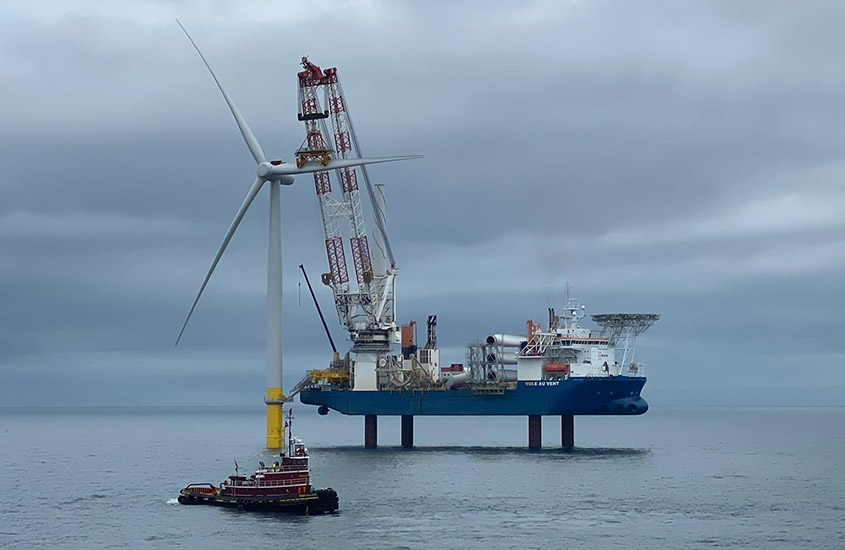Road Map Defines Path to a U.S. Offshore Wind Energy Supply Chain
NREL Study Identifies Steps Needed To Quickly and Strategically Meet National Deployment Goals
Achieving the national offshore wind energy goal of 30 gigawatts installed by 2030 will require 2,100 wind turbines, 6,800 miles of cable, thousands of components, hundreds of vessels of different types, as well as lots of helping hands.
But how will the United States build up and sustain a domestic supply chain—and workforce—to make it happen?
A pair of National Renewable Energy Laboratory (NREL) reports address this question.
A Supply Chain Road Map for Offshore Wind in the United States, which was published in January 2023, evaluates how the U.S. supply chain can evolve to support the national offshore wind energy target and position the industry for sustainable growth beyond 2030. The first phase of the project, which was published in The Demand for a Domestic Offshore Wind Energy Supply Chain in March 2022, highlighted the top-level demand for components, ports, vessels, and workforce required to hit the national offshore wind target of 30 gigawatts of capacity.

“This report identifies critical actions that we need to take as an industry to develop the supply chain quickly but also strategically and equitably,” said Matt Shields, an NREL offshore wind energy analyst who led the study. “This supply chain would increase our chances of meeting the 30-gigawatt target by 2030, create tens of thousands of jobs, provide economic benefits, and most importantly, prepare the offshore wind energy sector for success going forward.”
Researchers from NREL and the Business Network for Offshore Wind developed a road map of suggested actions to overcome development barriers and create a resilient, equitable, and comprehensive offshore wind energy supply chain. Some findings from the supporting analysis used to develop these recommendations suggest that:
- A domestic supply chain that can supply 4–6 gigawatts of projects per year will likely require an investment of at least $22 billion in ports, large installation vessels, and manufacturing facilities.
- Without additional investment, half of the U.S. offshore wind energy projects in the pipeline are at risk of being delayed beyond 2030 because of limited port and vessel infrastructure. This risk could be addressed with around $6 billion of investment in new and expanded ports and vessels.
- Domestically manufactured components can be cost competitive with imported components, but the United States will still need to import components to meet the 30-gigawatt target as the domestic supply chain ramps up.
- A domestic supply chain could create 10,000 full-time-equivalent jobs in major-component manufacturing facilities by 2030, with up to five times as many opportunities for supplier jobs, all of which would span the country.
Many ongoing supply chain activities are considering energy justice principles. Expanding these considerations could help to maximize benefits and minimize harm to host communities for supply chain resources.
This report concludes the second phase of the 30 GW by 2030: A Supply Chain Road Map for Offshore Wind in the United States project. The project was led by NREL and overseen by the National Offshore Wind Research and Development Consortium. The Maryland Energy Administration, the U.S. Department of Energy, and the National Offshore Wind Research and Development Consortium provided project funding and support. The consortium will release a full project summary in the next few months.
Learn more about the 30 GW by 2030: A Supply Chain Road Map for Offshore Wind in the United States project and NREL’s offshore wind energy research. And be sure to subscribe to NREL’s wind energy newsletter for more news like this.

